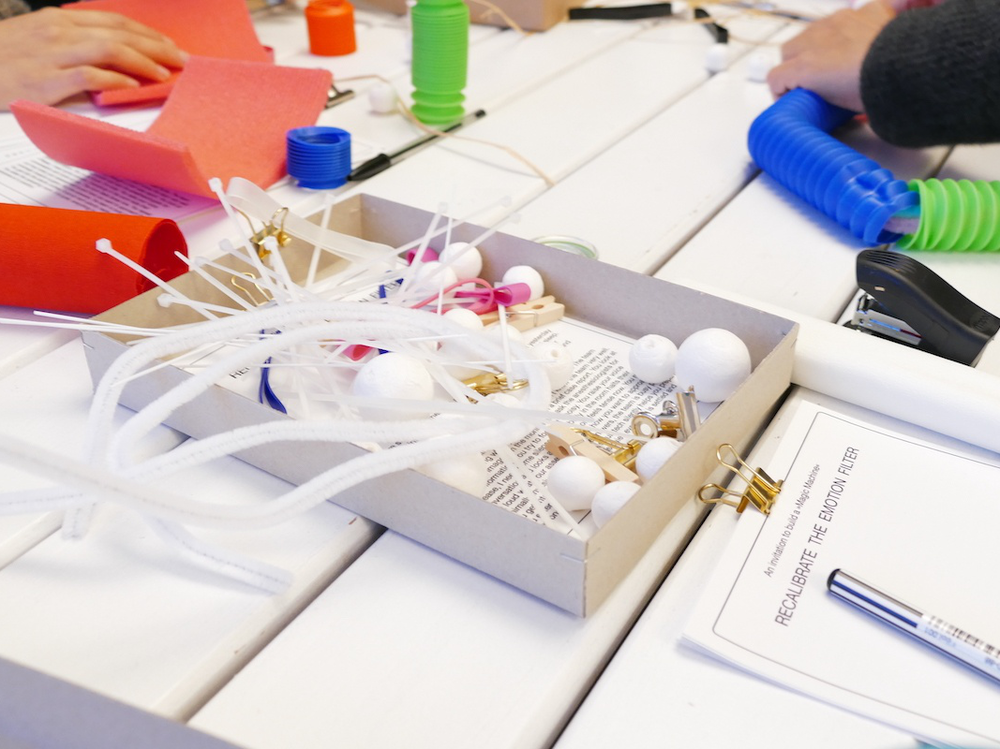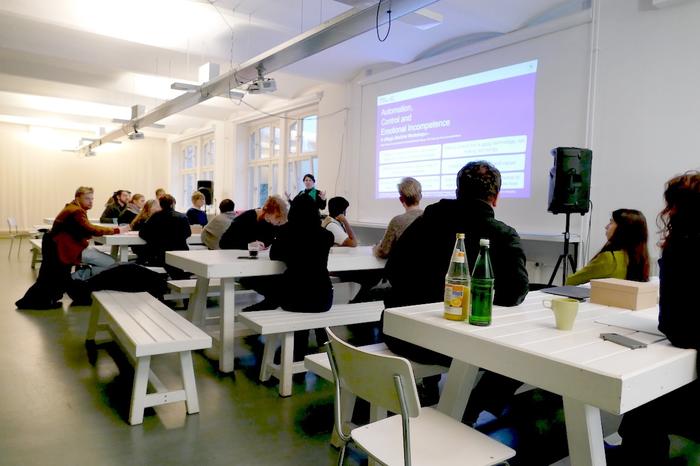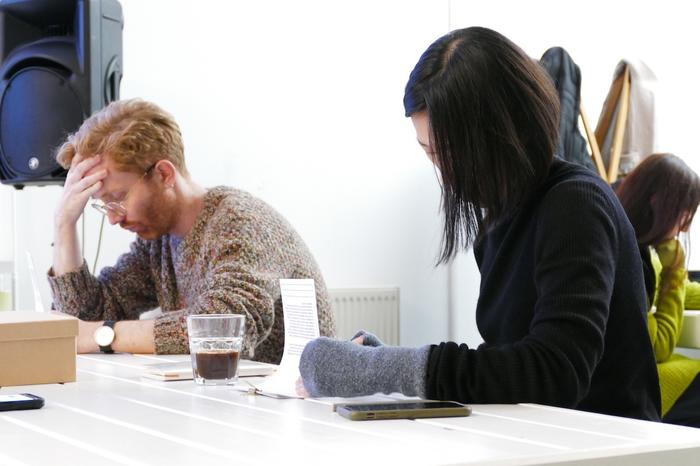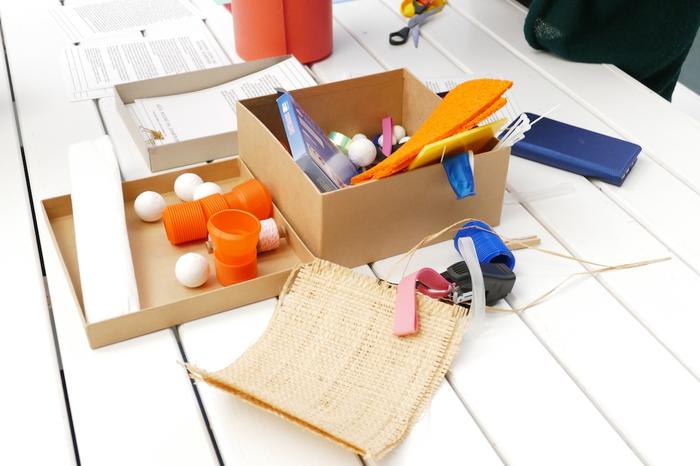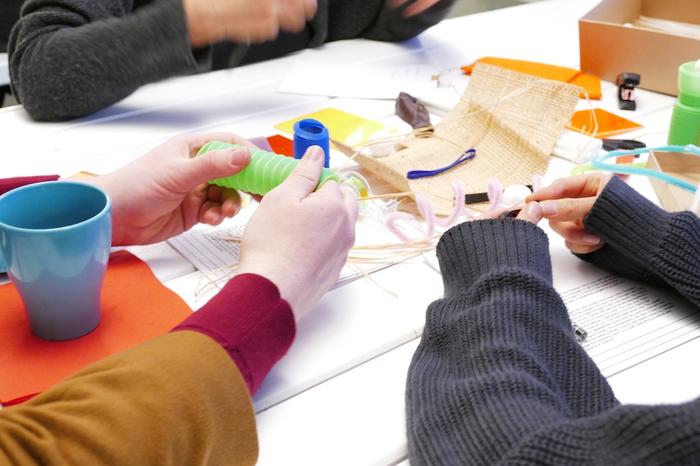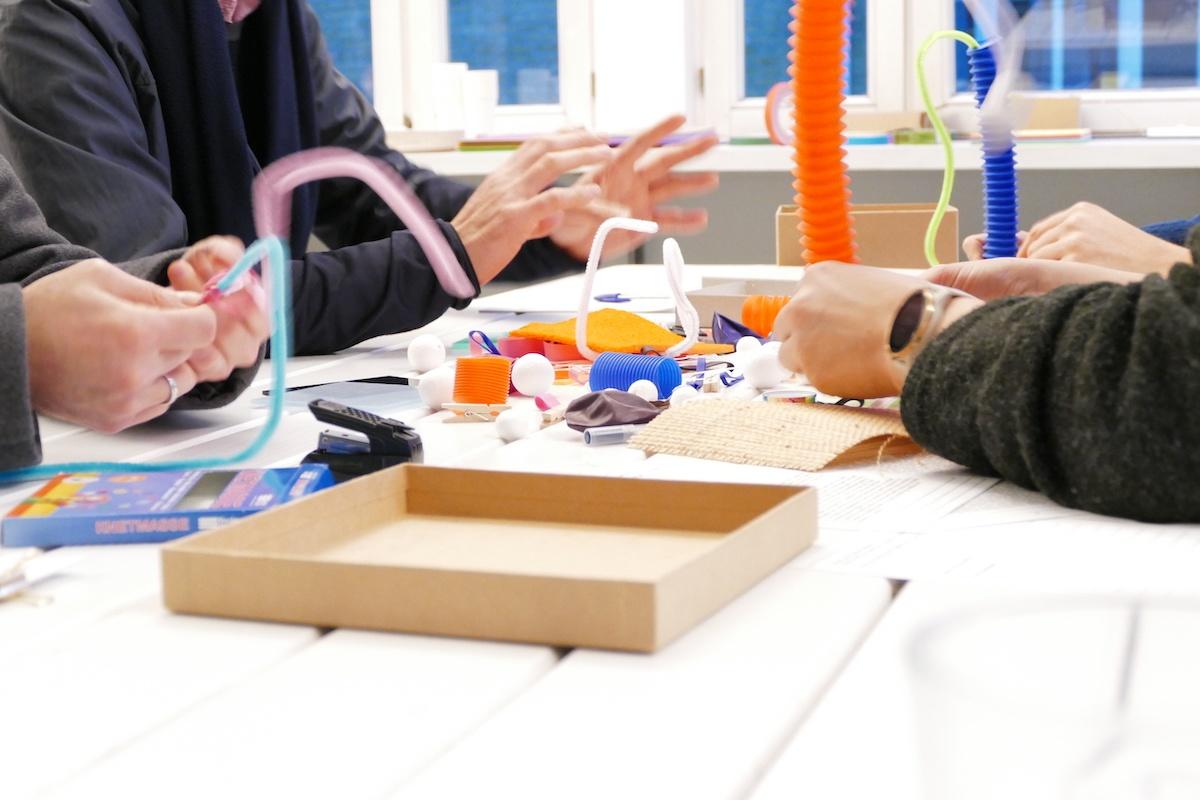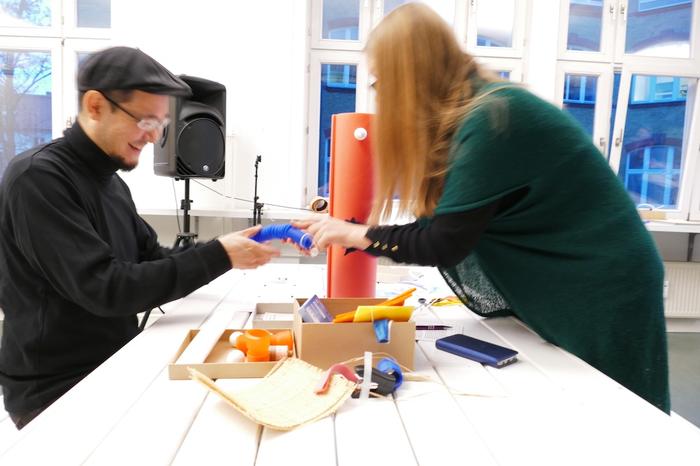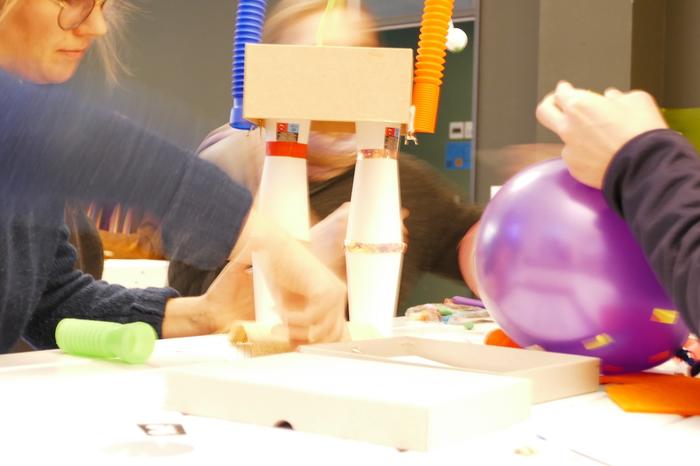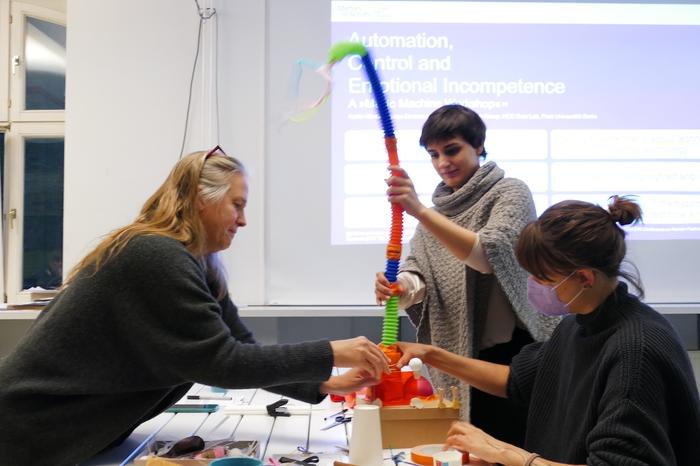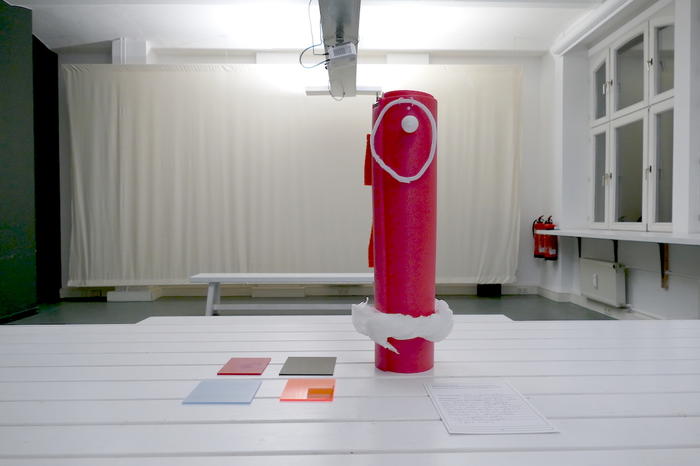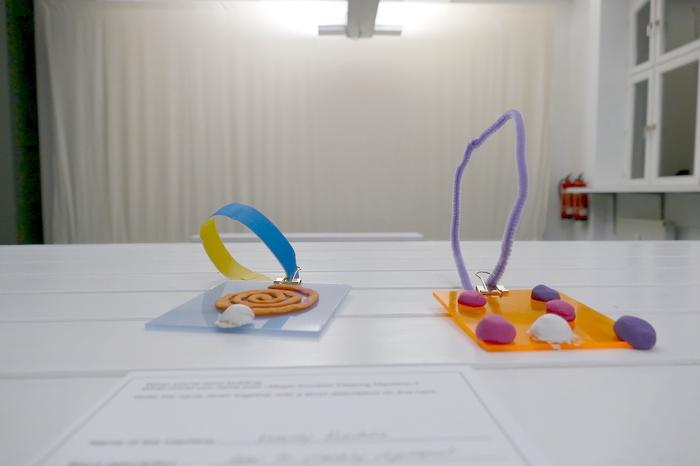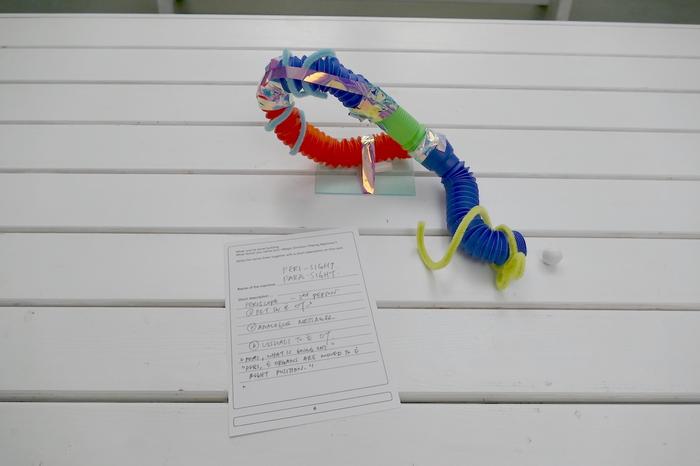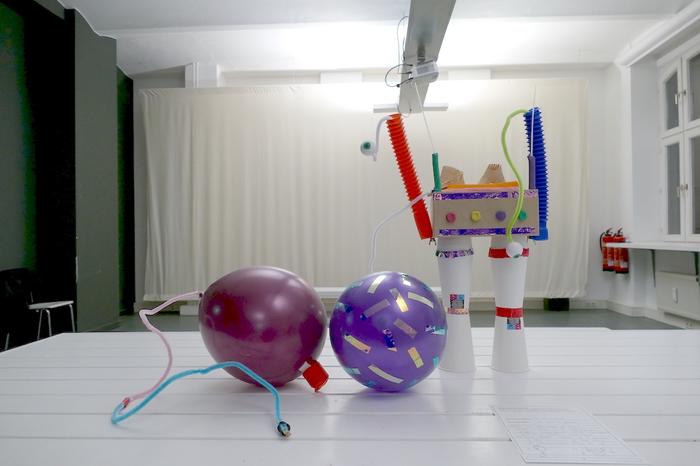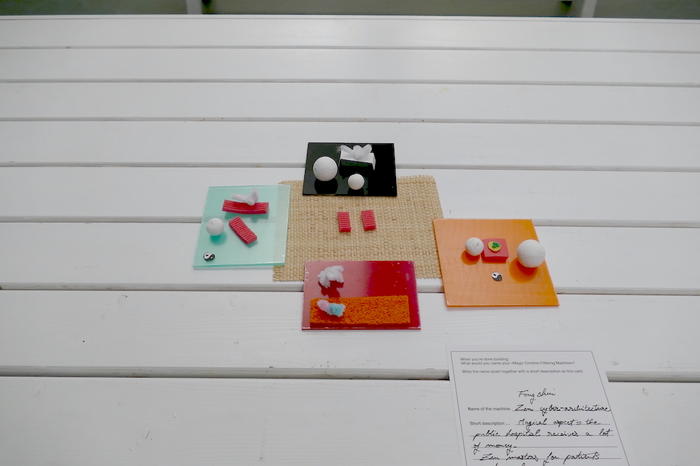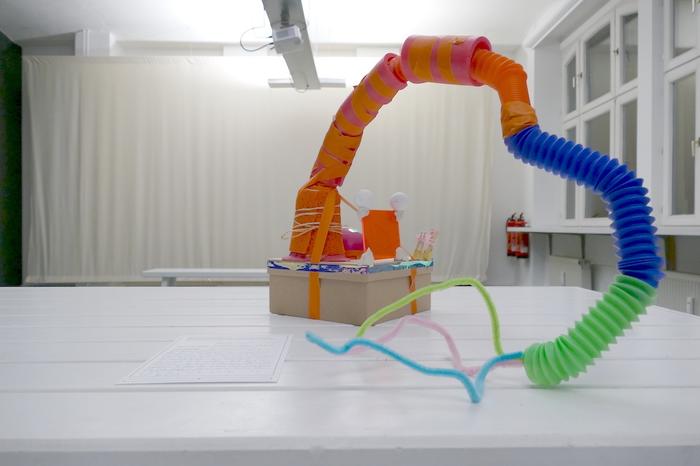Exploring the Design of Responsible Filters - Countering the Filtering Effects of Robotic Assisted Surgery on Emotion and Communication
by Katrin Glinka
Context and Setting
The HCC Data Lab contributed to the two-day workshop on »Automation, Control, and Incompetence – Socio-Technical Ecologies of Responsible Filtering in the 20th and 21st Century« at the cluster of excellence »Matters of Activity« (MoA). The workshop took place on December 1st-2nd, 2022 at the MoA central laboratory in Berlin. Prof. Dr. Claudia Müller-Birn, head of the HCC Research Group, acts as principal investigator for two of the six projects at the MoA cluster: Cutting and Filtering. In the project Filtering, the HCC's research is focused on Robotic-assisted surgery (RAS). As part of this research, Dr. Mario Cypko investigates how to enable assistance, transparency, and feedback in the human-robotic interaction in RAS.
The aim of the two-day workshop on »Automation, Control, and Incompetence« at the MoA cluster was to elaborate »the historical and cultural-political dimensions of automation processes, as well as the current challenges of HCI and technology design in the face of diverse societies«. It gathered researchers, students and practicioners who contributed with paper presentations and discussions on histories of automation and AI, the sociality of digital filtering, politics and policies of filtering, and filtering in the context of labour, logistics and industry.
Conceptualizing the Filtering Workshop
For the final day, December 2nd, we conceived and organized a hands-on workshop session that was led by Katrin Glinka of the HCC Data Lab. In order to engage the participants and speakers of the event in a creative activity of material practice, we conceptualized a workshop that was inspired by previous research by Andersen and Wakkary [1], who developed the »Magic Machine« workshop format in order to allow the participants to generate strong individual commitments and expose underlying personal desires as drivers for ideas [1]. Our workshop was grounded in our observation that scholarly exchange - for example in discourse-oriented events that center on the presentation of research papers - tends to overlook the potential of personal and individual reflection and material engagement with a topic. In contrast, our workshop invites the participants to develop personal visions of a potential novel artifact (e.g., technology), which gives them the opportunity to arrive at a more complex understanding of diverging visions for responsible filters (see [1]).
Filtering in the context of Robotic Assisted Surgery
With reference to the cluster's understanding of Filtering as an environing technique, Robotic-assisted surgery can be understood as an information filter in the operation room. However, RAS also filters emotions and senses of the operating team and can lead to 'emotional incompetence' in a surgical situation. At the same time, team communication in the operating room is considered a key patient safety factor [2]. This also extends to emotional expressions of the surgeon that are processed by other team members in the operating room and influence their behavior [2]. In RAS, the monitoring of each other’s well-being is impaired, since a lack of visual access caused by the robot often results in a lack of awareness of others’ emotions [3]. While operating through a console with some distance to the operating field, the surgeon is unaware of what the team experiences [3]. This negatively impacts the cooperation of the team and, thus, potentially the outcome of the operation.
This situation acted as the starting point for the workshop and provided our motivation for exploring the design of a responsible filter that recalibrates the emotion filtering effects of RAS.
Recalibrating the Emotion Filter: Workshop Procedure
Recalibrating the Emotion Filter
Image Credit: MoA
Workshop Procedure
Image Credit: MoA
Workshop Procedure
Image Credit: MoA
After a short contextualization of the topic at hand, Katrin Glinka introduced the participants to the workshop. The participants were seated at tables in groups of no more than four. Two boxes had been placed in the middle of each table. After the introduction, we asked participants to open the first box - which contained a set of 6 cards that spelled out a scenario and a prompt - take out one set of prompt cards each, and read them in silence.
We situated the workshop's material practice in a scenario, which is described on the first few cards. The scenario depicts the beginning of a workday of a surgeon who is about to begin a minimally invasive surgery. The first part of the scenario is set during an endoscopic surgery and illustrates the situation before and during the surgery, including stress, failures, emotionally challenging miscommunications and how the surgeon solves these situations together with the team. The second part of the scenario describes the same situation - however, in this case in the context of a Robotic-assisted surgery. By contrasting these two condensed descriptions of the same situation in a scenario, we aimed at illustrating the 'emotion filter effect' of RAS. The next card then situated the scenario in the context of filtering and current research findings on the role of emotions in the operating room and the effect of RAS. This card also included the prompt for the participants: they were tasked to build a »Magic Emotion Filtering Machine« and specify how the machine is calibrated: Is it designed to amplify emotions? Is it designed to enhance the emotional spectrum? Or is it designed to control or mute emotions?
Workshop Procedure
Image Credit: MoA
Workshop Procedure
Image Credit: MoA
Workshop Procedure
Image Credit: MoA
After having read the prompt cards, the participants were asked to open the second box, which contained the material. We had curated the material for the workshop in such a way that it would spark creativity and emphasize the hands-on character of the workshop. We did not include material that would lend itself easily for building screens, interfaces, or computers in order to avoid that participants engage in a technological perspective on the given problem. Participants then could decide to build their own artifact or collaborate with others. In the beginning, some groups started discussing their reaction to the scenario and prompt without engaging with the material and had to be encouraged to also let the material inspire their ideas. Other groups started to touch, feel and explore the material right away, while talking about their personal visions for the »Magic Emotion Filtering Machine« that they then combined with their collaborators' ideas.
Between the groups, there were different approaches during the building of the artifacts. One group of four started off discussing what kind of artifact they wanted to build. After realizing that it would not be feasible to include all four visions in one, they decided to split up and each build their own artifact that would illustrate one specific aspect of their common idea. Other groups took a rather playful approach in that they let their engagement with the material guide the building process. The building of the artifacts took about half an hour.
Results: between responsible filters and surveillance machines
»Machine of Empathy«
Image Credit: MoA
»Moody Machine«
Image Credit: MoA
»Peri-Sight | Para-Sight«
Image Credit: MoA
»DIMILAMA«
Image Credit: MoA
»Feng shui Zen cyber-architecture«
Image Credit: MoA
»Emotion Unionizing Viewpoint Interpretation System O-Matic - EUVIS«
Image Credit: MoA
Although we purposely refrained from including any material that would evoke direct associations of screens, interfaces, or computers, one group emptied the material from the box onto the table in order to use the box to build the body of a robot and add buttons as an interface from modelling clay. Another group used the remainder of a recycled yoga mat (pieces of the mat were also included in the material boxes) to represent a column with camera and interface at the top. Of those artifacts that were conceived of as »technology«, or that referenced existing technology, some integrated aspects of surveillance technology - for example the »Machine of Emphathy«: an AI-driven facial recognition and body metrics scanner that would analyze the surgeon's and the team's emotions and mood and forward this information to the whole team, or the »Moody Machine«: a set of lanyards that would read the mood of the wearer and display the team's mood to each other. However, while presenting their artifacts, most participants emphasized that their artifact would be deployed in a responsible and ethical manner, for example, by making sure that all operation team members had to consent to the emotion scan (or other technological features) and that they also can opt out of using it.
While all builders and groups actively and productively took part in the hands-on workshop, there were different approaches in terms of how the scenario and prompt were addressed. Most groups and builders engaged with the emotion filtering effects of RAS and developed a vision of how the negative effects could be mitigated or countered. However, some groups took a rather ironic approach. This includes, for example, »Peri-Sight | Para-Sight«: an authoritative artifact that is conceived of as a third person or pet in the operating room and that acts as an analogue messenger that would shoot small spheres at team members if they displayed a bad mood. Another group explored the full potential of »magic« with the two-part artifact »DIMILAMA«: one of the parts would be attached to the operation team member's ears and inject a »magic substance« in order to counteract bad feelings, stress or moods that might negatively impact the operation and the patient's safety. The injection would transport the person to a relaxing space without creating an interference in their performance or time-loss.
Several builders created artifacts that addressed socio-political ramifications and referred to the artifacts more as symbolic representations of these aspects or as material metaphors for the changes that they envisioned. One of these examples is the »Feng shui Zen cyber-architecture« ensemble that surrounds the operation room and is intended to decelerate working conditions in hospitals and prioritize the wellbeing of the medical staff and the patients. The operating team and patients would have to pass through this architecture in order to balance their emotions, which would contribute to a more relaxed and safe environment with less miscommunication in the operating room. Another artifact, the »Emotion Unionizing Viewpoint Interpretation System O-Matic - EUVIS«, addressed socio-political aspects in that it would allow the team members to encounter their own viewpoints and moods and also see those of the others. If »EUVIS« senses that more than half of the team felt bad or were tired, the 'union buzzer' of the machine would go off and bring in a fresh and relaxed team to take over the shift.
Discussion
After the builders had presented their artifacts, we entered into a group discussion in order to share some of the observations that the participants had made during their material engagement with the topic. We also encouraged them to reflect on the workshop and how they approached the topic. The discussion allowed us to complement the rather fun and playful activity of building the artifact - which sometimes included an ironic twist - with a more serious, reflective approach and critical re-considerations of the topic at hand. Although the topic for the workshop was rooted in a current research project on Robotic-assisted surgery within the cluster, some participants voiced concern about what they perceived as techno-solutionism. They felt sceptical about the workshop since it had prompted them to build »magic machines« - if RAS creates emotional and communicative losses during a surgery, why not get rid of the robot instead of trying to improve technology that could never solve the underlying socio-political problems in the first place?
The participants also self-critically reflected on the references to surveillance technology that were inherent in some of the artifacts. While they were able to take on a theoretically informed critical stance towards filtering and technologies during the paper presentations and discussions, this aspect somehow faded into the background during their material engagement with the topic and their building of the artifacts. This also echoes our experiences when engaging in research that aims at interdisciplinary and responsible technology design: it appears to be particularly challenging for non-technologists to translate theoretically informed critical approaches into productive contributions to responsible technology design. This observation also coincides with the implication of techno-solutionism: instead of trying to effectuate their criticism by actively informing and contributing in the design and conceptualization of sociotechnical systems, some might dismiss a technological approach altogether.
However, as this workshop has once again shown, material engagements with a complex topic at hand can contribute to opening up new spaces of possibilities. The workshop and the discussions with a broad variety of viewpoints has given us fresh inspiration for how we can address the challenges laid out. Our rationale with integrating a hands-on workshop into an event that is focused on scholarly exchange through the form of paper presentations and discussions was that of expanding our 'ways of knowing'. As part of the interdisciplinary MoA cluster, we pursue the goal to explore new formats that expand existing methodologies in human-computer interaction, for example in regards to how we can conceptualize and actualize non-human agency in the context of human-robotic interaction in RAS. This workshop was one step into this direction.
[1] Kristina Andersen and Ron Wakkary. "The Magic Machine Workshops: Making Personal Design Knowledge". Proceedings of the 2019 CHI Conference on Human Factors in Computing Systems. Association for Computing Machinery, New York, USA, 2019
[2] Lia, Hillary, et al. "Setting the Tone in the Operating Room: a Model Guided By Emotions as Social Information Theory." Academy of Management Proceedings. Vol. 2022. No. 1. Briarcliff Manor, NY 10510: Academy of Management, 2022
[3] Pelikan, Hannah RM, et al. "Operating at a distance-how a teleoperated surgical robot reconfigures teamwork in the operating room." Proceedings of the ACM on Human-Computer Interaction. CSCW (2018): 1-28.



